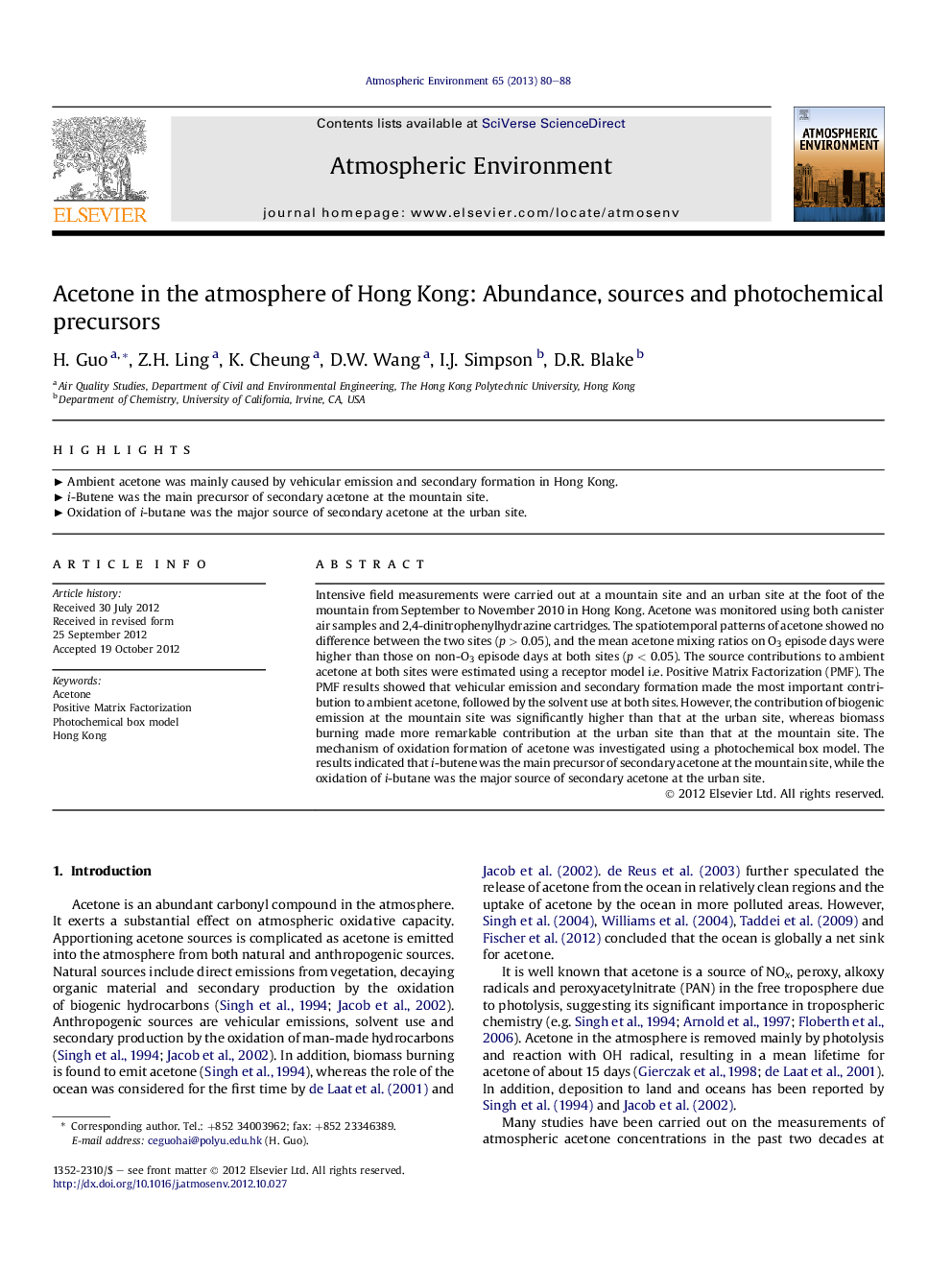| Article ID | Journal | Published Year | Pages | File Type |
|---|---|---|---|---|
| 4438527 | Atmospheric Environment | 2013 | 9 Pages |
Intensive field measurements were carried out at a mountain site and an urban site at the foot of the mountain from September to November 2010 in Hong Kong. Acetone was monitored using both canister air samples and 2,4-dinitrophenylhydrazine cartridges. The spatiotemporal patterns of acetone showed no difference between the two sites (p > 0.05), and the mean acetone mixing ratios on O3 episode days were higher than those on non-O3 episode days at both sites (p < 0.05). The source contributions to ambient acetone at both sites were estimated using a receptor model i.e. Positive Matrix Factorization (PMF). The PMF results showed that vehicular emission and secondary formation made the most important contribution to ambient acetone, followed by the solvent use at both sites. However, the contribution of biogenic emission at the mountain site was significantly higher than that at the urban site, whereas biomass burning made more remarkable contribution at the urban site than that at the mountain site. The mechanism of oxidation formation of acetone was investigated using a photochemical box model. The results indicated that i-butene was the main precursor of secondary acetone at the mountain site, while the oxidation of i-butane was the major source of secondary acetone at the urban site.
► Ambient acetone was mainly caused by vehicular emission and secondary formation in Hong Kong. ► i-Butene was the main precursor of secondary acetone at the mountain site. ► Oxidation of i-butane was the major source of secondary acetone at the urban site.
